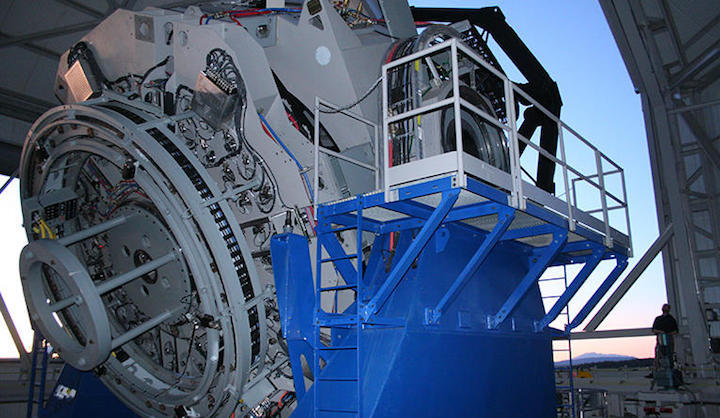19.03.2018

A new, ground-based spectrometer designed and built at Yale represents the most powerful step yet in the effort to identify Earth-sized planets in neighboring solar systems.
The new instrument, the Extreme Precision Spectrometer (EXPRES), is now operational and collecting data at the Lowell Observatory Discovery Channel Telescope in Arizona. EXPRES will improve measurement precision by a factor of 10, enabling the detection of small, rocky planets around nearby stars.
“Up until now, the only planets we could detect with ground-based spectrographs were the bigger ones, the Saturns and Jupiters,” said Yale professor Debra Fischer, whose team designed EXPRES. “We know the smaller planets are out there, but they’ve slipped through our nets.”
Better data is particularly important, Fischer noted, because although astronomers have identified thousands of new planets in the past few years, none are analogs of Earth. Understanding which planets are similar in size to Earth and orbiting at distances from their host stars where water is likely to pool into lakes or oceans will be essential in the search for life elsewhere in the cosmos, she added.

Fischer announced initial details about the installation of EXPRES at the 2018 annual meeting of the American Association for the Advancement of Science in Austin, Texas.
“The future trajectory of exoplanet research depends critically on how well we improve radial velocity precision in spectrometers today,” Fischer said.
Spectrometers are instruments astronomers use to study light that is emitted by planets, stars, and galaxies. They are used in tandem with either a ground-based or orbital telescope. Spectrometers stretch out a beam of light into a spectrum of frequencies — which is then analyzed to determine an object’s speed, direction, chemical composition, or mass. The gravity of a star holds a planet in its orbit, but the planet also tugs on the star. Radial velocity refers to the motion of the star along our line of sight.

The challenge for astronomers has been designing spectrometers with enough stability and fidelity to measure tiny wobbles from Earth-like planets. For EXPRES, Fischer worked with Jessi Cisewski, an assistant professor of statistics and data science at Yale, to develop software that disentangles subtle noise sources in the stellar spectrum.
Fischer said the result should be quite telling. “It’s equivalent to the difference between early digital cameras from 10 years ago and the latest smartphone photography,” she said.
With EXPRES up and running in Arizona, and the similarly advanced ESPRESSO spectrometer built by Swiss astronomers in Chile, Fischer and other exoplanet researchers are preparing for a wealth of new data that might dramatically advance the search for extrasolar life.
“We’ve designed some very clever tests,” she explained. “It’s going to be amazing.”
EXPRES was funded by an instrumentation grant from the National Science Foundation.
Quelle: Yale University
